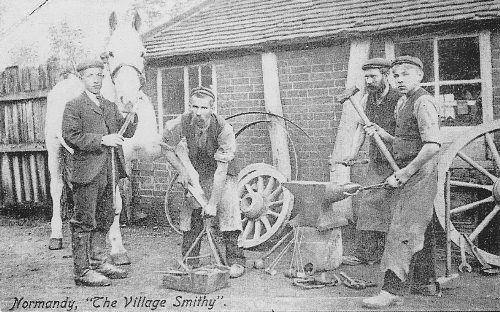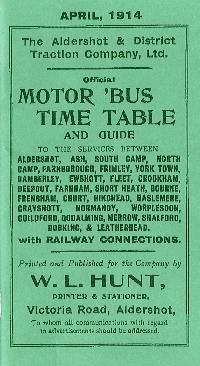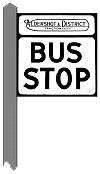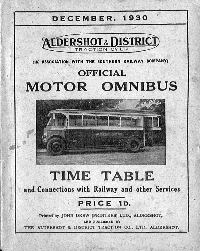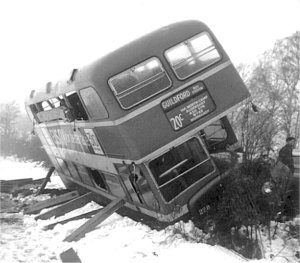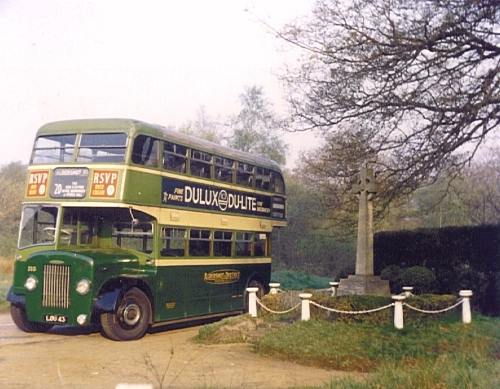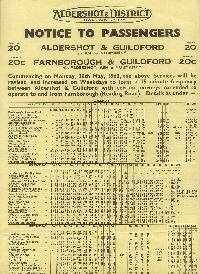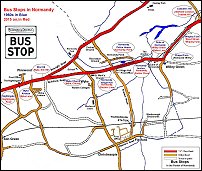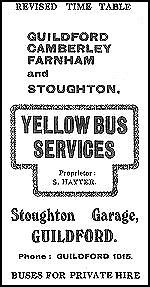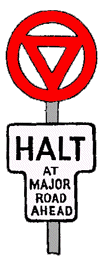|
In terms of road transport, Normandy one hundred years ago was very different to what it is today. Mention has been made about the generally bad state of the roads. Vehicles were horse-drawn and the local smithys did a good trade in maintaining both animals and the vehicles they drew.
There have been commercial carriers in Normandy since the earliest times. In 1881, William Marshall was a carter in Normandy village and James Alderton of Wyke Cottage was a "Farmers Carter". By 1909 commercial carriage was also offered by Alfred Matthews who went to Farnborough, Aldershot and Farnham on Mondays, Wednesdays and Fridays at 8.30am and to Guildford on Tuesdays, Thursdays and Saturdays at 8am. His wife Sarah sold cakes from her cafe at their home at Petworth Villa near the Nightingale inn. The Friary Brewery used a steam wagon to deliver to the Duke of Normandy. In about 1930 Albert Chant established his haulage contracting business in Guildford Road. He would put wooden seats in his van and transport people to the races and on works outings. He would also carry worshippers to the Roman Catholic Church on Sundays. Before long he also became a coach proprietor and from then on his passengers could travel in more comfort. As his sons grew up they joined the firm and assisted their father. Frank Chant drove the coach when his father became ill. Albert Chant died in 1939 and the brothers took over the firm. Sister Edie, having learnt to drive, went back to assist her brothers and helped to keep the business going when they were called up for military service. As the brothers grew older the business gradually wound down but Jim Chant, although officially retired, is still driving on occasions. Charabancs were popular in the 1920s and 1930s and passengers brought trade to the village, particularly when the Aldershot Tattoos were held at Rushmoor Arena. Since the Aldershot and District Traction Company (A&D), familiarly known as the "Tracco", played such an important part in the life of the village it is worth going into a little more detail of its workings. The A&D started operating a bus service between Aldershot and Godalming via Normandy and Guildford on 31 January 1914. This route also took in the Fox Inn at Pirbright, Worplesdon and Stoughton. To start with, there were three buses a day in each direction on weekdays and two on Sundays.
The journey time from Aldershot, Queen Hotel to Wyke Church was scheduled at 25 minutes. The company started the service with Dennis buses and there were also AEC "B" types, which were marketed by Daimler, and Belsize vehicles. The buses were first identified only by the destination. Subsequently, letters of the alphabet were used and finally the routes were numbered. Later, Dennis buses would take over almost completely and the A&D stayed loyal to this make for almost the whole of the rest of its existence. In 1915 the route was changed from via the Fox Inn and Worplesdon to run along the A323 past the turning to Wood Street. It also ran through to Witley and Haslemere for a few months. In 1916 and 1917 several services were suspended for the duration of the war but the Aldershot/Guildford route was one of the few to continue and by August 1916 the number of buses per day had increased to five on weekdays and three on Sundays. By the end of 1919 all the suspended services had been restored and the service to Normandy had again been increased to eight a day on weekdays and six on Sundays. The route had been extended to Dorking and was identified by the letter H. Further changes continued to be made in the schedules and in 1924 the frequency was up to 30 minutes intervals. The running time from Aldershot Queen Hotel to Wyke Church had been reduced to 22 minutes. By this time the service between Aldershot and Guildford was numbered 20 and the extended service to Dorking which also passed through the village was numbered 25. The 1926 General Strike had little effect on the A&D as all their employees remained at work and normal services were run. Tuesday 1 August 1933 was the last day of operation east of Guildford, this service having been taken over by the London Passenger Transport Board.
World War II had little effect on the operation of the route through Normandy although, especially on Saturdays, it could prove difficult to get on the very full buses. This situation was even worse when Aldershot Football Club was playing at home. In 1942 a letter from the Ministry of War Transport, exhibiting a typical piece of wartime bureaucracy, agreed that unclaimed rationed foodstuffs left in public service vehicles could be consumed in the operator's canteens providing that food coupons to the relative value of the foodstuffs were surrendered. One wonders how such a scheme could have been monitored. In 1943 the position of bus stopping points in Normandy was formalised and with two exceptions these have remained as agreed at that time. When the slip road into Pirbright Road from Elm Hill was constructed the bus stop was moved there from the previous position to the east of the junction. In 1997 Wyke crossroads was reconstructed to provide waiting bays for traffic turning right out of Guildford Road. The bus stop opposite Wyke Church was moved to a layby slightly to the west of the junction. In 1943 the A&D announced that it was introducing a minimum fare of 3d (1.25p) single on all outward journeys from Aldershot to Guildford. This was to discourage short distance passengers from travelling on the 20 service.
It is a matter of debate as to who owned the first private car in the village. Certainly, Lady Roberts of Henley Park was an early owner and the Field family who lived at "The White House" in Glaziers Lane had an open Model 'T' Ford. The first car through the village is said to have ended up in a ditch near the Guildford Road crossroads. In the 1930s cars were still few and far between.
Barnett the poultry farmer, Mr Cull and Sir Philip Henriques of Normandy Park were among the few owners and William Olley had a car provided for his work as a representative for Skeet and Jeffes. By 1938 John Horne, who had retired from his grocery shop to become a market gardener on his holding at Coorabelle, now called High Gables in Glaziers Lane, was offering cars for hire (phone Normandy 42). Tommy James ran a taxi service at Normandy Garage.
During the war many servicemen learnt to drive and with the coming of peace and full employment more and more were able to afford to buy a vehicle. However, the immediate post-war period was one of austerity and most vehicles produced in this country went for export to support the balance of payments. By the 1950s the situation had eased and the number of cars and motor cycles proliferated until the present time when driving has become somewhat of a nightmare because of the sheer volume of traffic. Thus while road surfaces have improved out of all recognition and mobility for most people has increased, fierce competition from road transport threatens the existence of the railway and public transport tends to be an expensive option. Also See
|

